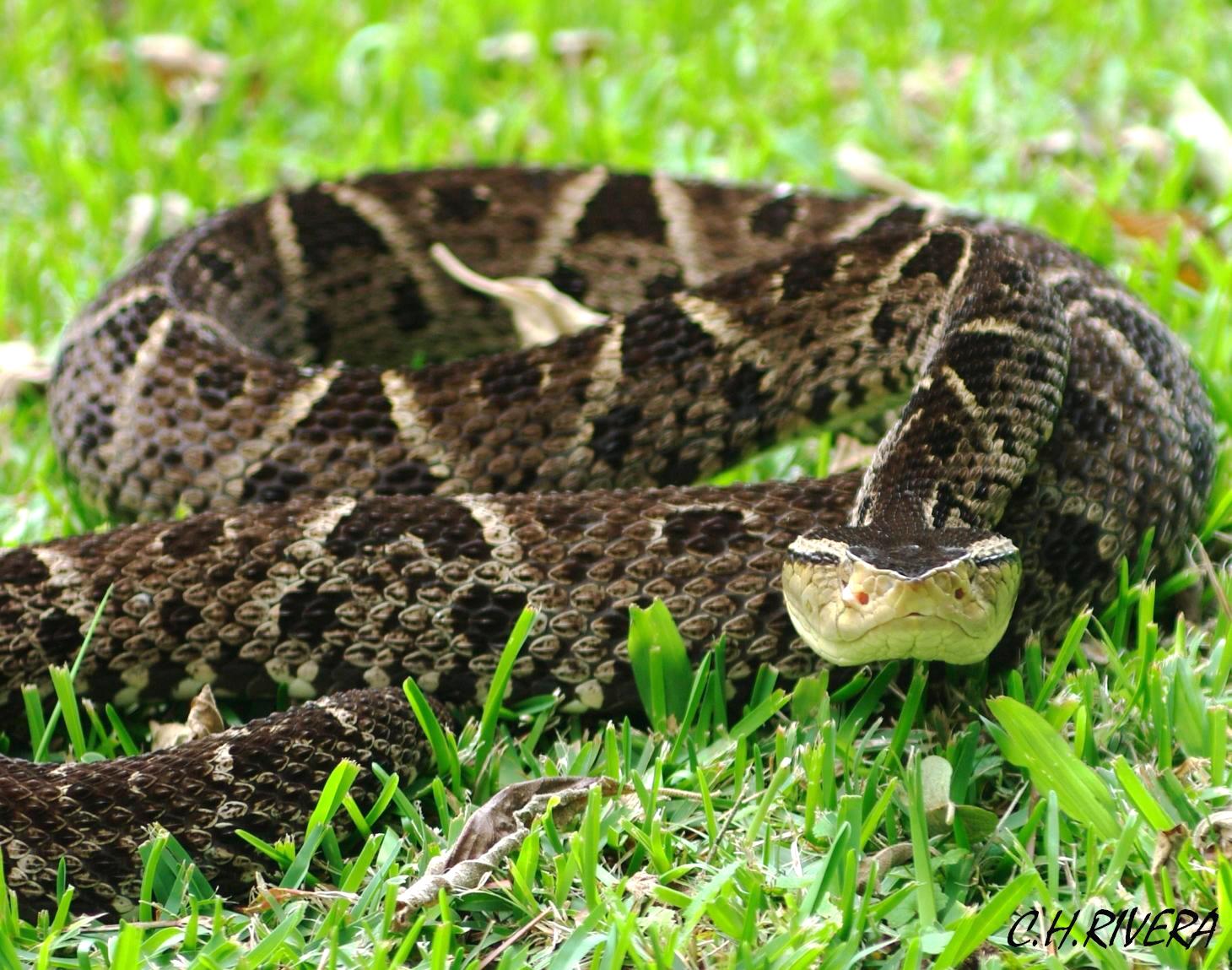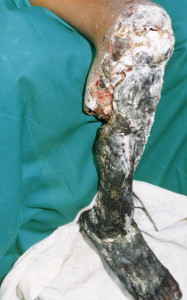Our Garden Buddies That Command Respect
Ok….not quite buddies, but we could call them co-workers. The Fer-de-Lance or “Terciopelo”, is one of the most dangerous snakes south of Texas. The name means “velvet” in Spanish and is the common name used in Costa Rica. It’s scientific name is the “Bothrops asper”.
This snake is common in Costa Rica and we’ve found them in our yard and garden. With our kids playing in the same yard, we try to educate them and let each ‘snake sighting’ become a learning experience. However deadly, these snakes are an important part of the rainforest ecosystem. The favorite food of adult terciopelos are rainforest rats. If jungle rat populations rise, they eat a lot of tree seeds and can change the structure of the forest. The rainforest rats also compete with larger mammals like agoutis, coatis and mapaches.
The Terciopelo’s Appearance
The Terciopelo is a large snake, which can reach up to 2.5m. Average adult varies between 140 and 180 cm in length. Females are generally longer than males. The body is fairly robust, large, distinct and clearly seen dorsally triangular head. The background color is dark gray, brown or olive-green with a distinctive dorsal pattern consisting of a series of triangular designs on both sides of the body viewed dorsally designs reminiscent of a letter X. When cornered or threatened, this species can be very defensive and may coil up in an S-shaped display. The species is quite fruitful and can give birth to 90 babies. High reproductive rates are one reason the velvet is one of the most abundant snake country. Also, it finds it self comfortable in disturbed and messy environments near human habitation. This is likely why it’s responsible for over 50% of snake bites in the region. (Keep that lawn trash-pile away from the house!)
 Terciopelo Venom
Terciopelo Venom
Their venom is hemotoxic, meaning it attacks the blood, and causes clots that lead to death of the surrounding tissues. The bites are very dangerous but can be treated with anti-venom. The venom does not have a neurotoxic effect, but within 1-2 hours, it can do a ridiculous amount of damage to flesh. As you can see by the picture on the left, you should seek medical attention ASAP!
Location Location Location!
The Terciopelo is distributed throughout the Caribbean and northeastern Mexico, and from the Central Pacific of Costa Rica to the Pacific lowlands of Colombia and Ecuador. In Costa Rica, is abundant in the humid lowlands of the Pacific and Caribbean. The species have been spotted as high as 1,500m elevation but mostly stick to lower elevations. The Terciopelo is nocturnal and solitary. It is less active in colder and drier periods and is often found near rivers and streams, basking under the sun during the day and lying still while well camouflaged in leaf litter or under forest cover waiting to ambush prey (including rats and mice) that comes within range during the night.
What a bite from a Terciopelo can do to a foot in just 2 hours! (In Costa Rica)
Some ways to prevent a nasty snakebite are:
Being aware while walking
Staying out of loose leaves or thick brush if possible
Wear Boots
Using a flashlight when walking at night
Don’t play with Snakes
Our dogs do a good job of keeping most snakes out of our work and play areas, however sometimes it’s been necessary to make a kill. Our house policy is to make the best use out of whatever we have to kill. Terciopelos happen to make tasty meat snacks. With a little Adobo spice, the kids love’em!
Much of the specific snake data here was sourced by the University of Costa Rica Clodimoro Picado Institute They’re responsible for making the anti-venom available in Costa Rica.


 Terciopelo Venom
Terciopelo Venom

GIPHY App Key not set. Please check settings